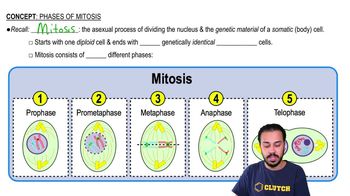Textbook Question
Add labels to the figure that follows, which illustrates duplicated chromosomes.
2133
views
1
rank
 Verified step by step guidance
Verified step by step guidance Verified video answer for a similar problem:
Verified video answer for a similar problem:



 6:51m
6:51mMaster Organization of DNA in the Cell with a bite sized video explanation from Bruce Bryan
Start learning